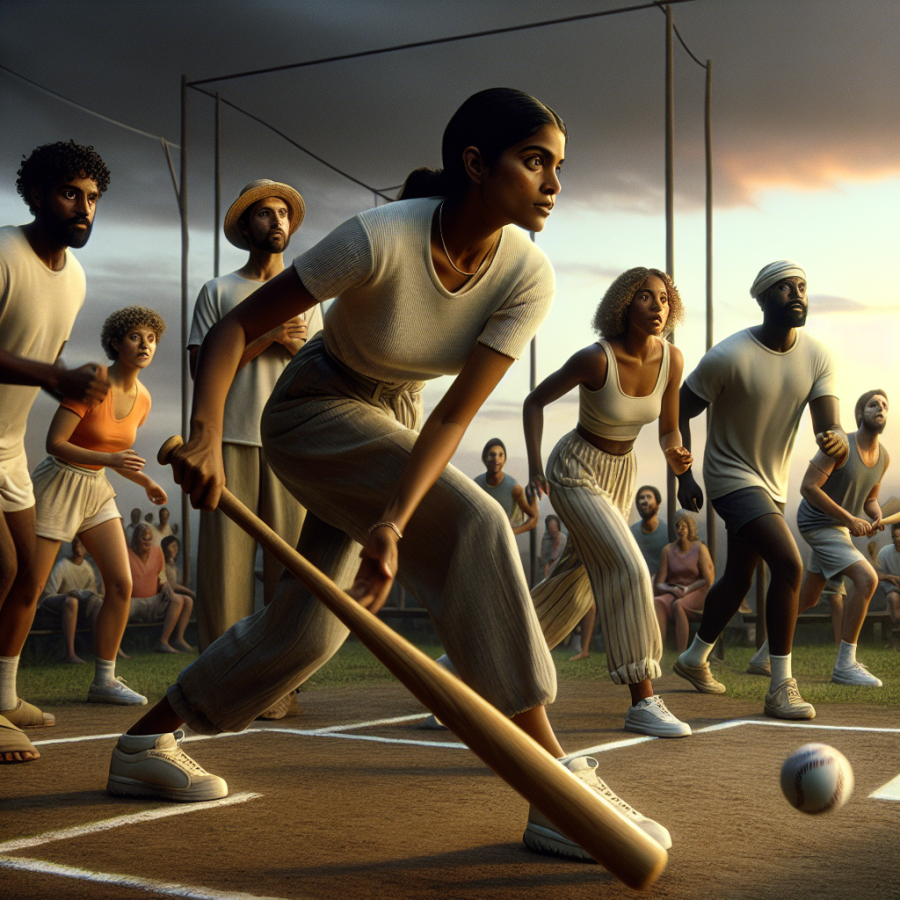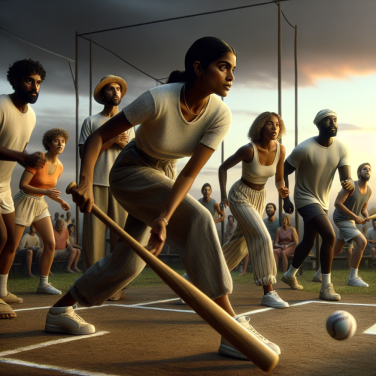The Origins and Cultural Significance of Kilikiti in Samoan Society
Kilikiti, often heralded as Samoa’s traditional variant of cricket, has roots that intertwine with the historical connections between Samoa and other Pacific islands, as well as with the colonial influence of the United Kingdom in the region. The game began its life when 19th-century missionaries from England introduced cricket to Samoa, a sport which quickly gained prominence amongst the local populace. Yet, rather than simply adopting the sport as it was, the people of Samoa infused it with their unique cultural flair, giving birth to kilikiti.
One of the most recognizable features of kilikiti is the festive atmosphere that surrounds the games. Unlike the more sedate pacing and formality of traditional cricket, kilikiti is often played to the vibrant sounds of Nifo'oti, the Samoan equivalent of a bat, which doubles as a musical instrument when struck against the ground, producing a lively beat that echoes the pulse of Samoan life. The incorporation of music and dance into the game underscores the cultural importance of communal participation and celebration in Samoan society.
The rules and equipment of kilikiti also diverge from the standard cricket model to align with Samoan traditions. For instance, the bats used in kilikiti are distinctively shaped, resembling an elongated triangular club, which allows for an entirely different batting technique. Furthermore, the rules are more flexible and teams are usually larger, which often results in a more dynamic and inclusive game. Clothing, too, is indicative of the sport's cultural significance—the traditional lavalava and colorful team uniforms seen during play are a feast for the eyes, further setting kilikiti apart from its cricket cousin.
Social gatherings in Samoan society have always been central to the governance and fabric of the community, and kilikiti serves as one such gathering, fostering unity and camaraderie. It acts not only as a pastime but also as a social conduit through which issues are discussed, alliances are forged, and cultural norms are passed down through generations. It’s a way for Samoans, young and old, to connect, engage in a friendly competition, and celebrate their heritage.
Moreover, kilikiti is intertwined with feasts and festivals, often being a key highlight during public holidays and village celebrations. The game has a unifying effect, where villagers, families, and churches come together to compete, cheer, and participate in the accompanying festivities.
The cultural significance of kilikiti cannot be overstated.
Read also:
Mastering the Marathon: Tips for Endurance Runners
Rules and Gameplay: Understanding the Unique Elements of Kilikiti
Kilikiti, also known as Samoan cricket, is an exciting and culturally rich game that shares some similarities with the cricket played internationally, but with distinctive characteristics that make it uniquely Samoan. The rules and gameplay of Kilikiti reflect the island nation's community spirit, joyous atmosphere, and competitive nature.
One of the most visually striking elements of Kilikiti is the equipment used. Players wield a bat that is significantly different from those used in international cricket. The kilikiti bat, known as the 'tao', resembles a three-sided club and can be quite heavy, allowing for powerful strokes. Its unique shape affords a variety of hitting styles and angles, contributing to the dynamic nature of the game. The ball, or 'pulu', is made from rubber and can vary in hardness, with some communities opting for a softer ball to encourage a more inclusive and less dangerous game.
The pitch in Kilikiti somewhat resembles that of traditional cricket but is often undefined, with boundaries set by mutual agreement of the teams. Rather than the well-manicured ovals of international cricket, Kilikiti games are frequently played on open village greens, with the boundaries sometimes marked by natural features such as trees or buildings.
One of the most distinctive aspects of Kilikiti is the number of players involved. Unlike the 11-player teams in standard cricket, Kilikiti teams can comprise huge numbers, sometimes with over 30 participants, reflecting the communal aspect of the game. Everybody from the village, regardless of age or skill level, is welcomed to play, emphasizing the game's role in fostering social bonds.
The game's format is flexible; while international cricket matches can last for several hours or even days, Kilikiti games can vary in length according to the event's context. Some matches are played over a few hours, while others may last a day or more, depending on the occasion and the number of people participating.
Scoring in Kilikiti also bears similarities to cricket, with runs scored by players hitting the ball and running between the wickets. However, the scoring can be more liberal, with fewer restrictions on wide or no-balls, and players can often negotiate some of the rules before the game starts to suit the local preferences or conditions.
Perhaps one of the most enchanting elements of Kilikiti gameplay is the atmosphere surrounding the matches.




